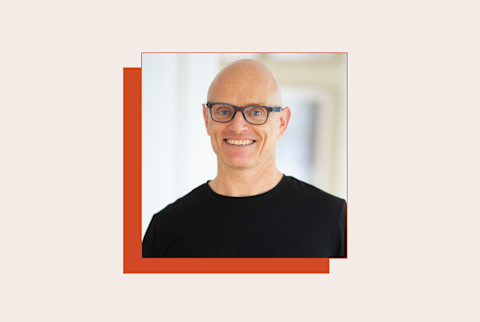The #1 Landing Mistake That Predicts ACL Tears & How To Fix It

What if you could predict a devastating knee injury long before it happens, just by paying attention to how your feet hit the ground?
This is exactly what sports journalist and data storyteller Henry Abbott explores in his latest work, Ballistic, and in his recent appearance on the mindbodygreen podcast.
Drawing from cutting-edge research at the Peak Performance Project (P3), a sports science lab led by Marcus Elliott, M.D., Abbott reveals a revolutionary approach to preventing ACL tears by analyzing movement patterns that are invisible to the naked eye but crystal clear through motion capture and machine learning.
The subtle movement that predicts ACL tears
One of the most eye-opening insights from Abbott’s reporting comes from a multi-year study of almost 400 NBA players, which analyzed over 500 variables per athlete. Among the most startling discoveries? All players who eventually tore their ACL shared one telltale movement pattern.
“Every single NBA player in the study who tore their ACL landed on the outside of his foot and then had his weight roll to the inside,” Abbott explains. “They call it ‘translation.’”
That seemingly minor roll of the foot creates a "windshield wiper" effect in the tibia (shin bone), putting the knee joint under intense and risky rotational stress. What makes this discovery groundbreaking is its consistency: this landing pattern showed up in every single case of ACL injury in the dataset.
For decades, injury prevention focused on what happens above the knee—valgus collapse, quad dominance, weak hips. But this research turns the spotlight downward, showing that the initial foot strike has a far greater influence than once believed.
Train these muscles to protect your knees
The most exciting part? This is a problem we can train our way out of, if we target the right muscles.
Most training programs typically prioritize training the bigger muscles, such as the quadriceps and hamstrings. But, as Abbott notes, "Underneath [the knee] are the under-recognized heroes."
He points to two underappreciated muscles:
- The soleus, a deep calf muscle that helps pump blood and absorb force.
- The posterior tibialis, which stabilizes the arch and controls inward foot motion.
Strengthening these lower leg muscles helps you land more efficiently: on the ball of your foot, with your ankle loaded, so that the impact is transferred upward in a safe chain reaction, through the Achilles tendon, quads, and glutes. When all three joints (ankle, knee, hip) are flexing together, your body can absorb force without injury.
A simple protocol to protect your knees
You don’t need access to force plates and motion labs to apply this knowledge. According to Abbott, you can retrain your body with a few simple exercises:
Single-leg heel raises
Stand on one leg, using a wall for balance if needed. Slowly raise and lower yourself 15 times. This builds strength in the posterior tibialis and soleus, two of the most important (and often ignored) muscles for injury prevention.
Jump rope drills
Follow the heel raises with jump rope. This trains the neurological coordination between your feet and glutes, helping you instinctively land with better mechanics.
Hip stability work
Since the hip is the second most common weak link in ACL injuries, it’s essential to strengthen the muscles around the femur to reduce rotation during landing. Think: lateral band walks, single-leg deadlifts, and controlled squats with a focus on form.
The results speak for themselves. “If you do this intervention,” Abbott notes, “you see up to a 67% reduction in ACL tears, which is about as successful as most medical interventions ever get.”
The takeaway
What Abbott and the P3 team are revealing isn’t just better rehab; it’s a smarter way to train. By shifting focus from fixing injuries to preventing them, they’re helping us reimagine what athletic performance looks like.
And you don’t need to be a pro to benefit. Whether you're lifting weights, chasing your kids, or playing weekend sports, these strategies can keep you moving well and moving longer.
